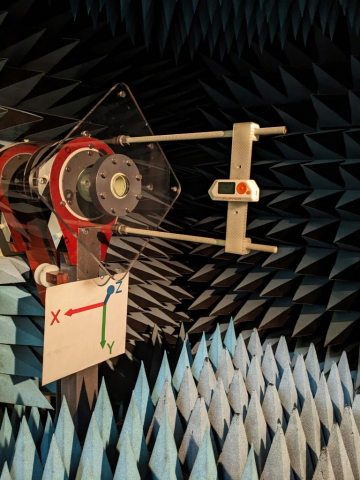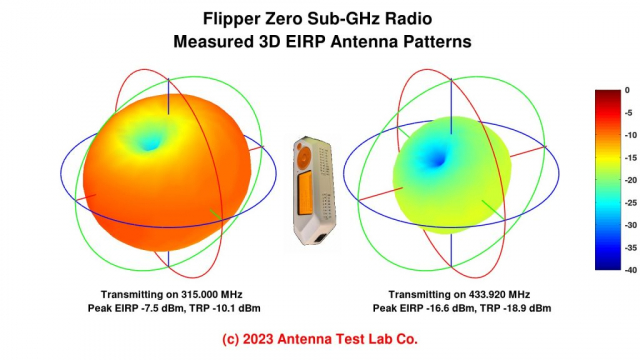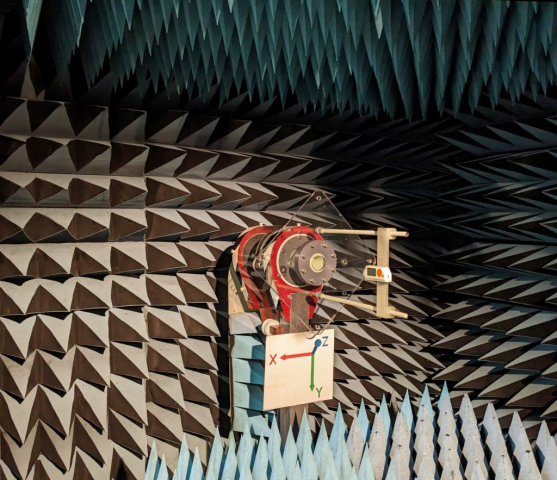- +1 919 200-0292
- info@antennatestlab.com

Flipper Zero Antenna Patterns
Flipper Zero Antenna Patterns
We were curious about the viral Flipper-Zero device … just like everybody else is. It does have a sub-GHz radio and can record/playback modulated signals in the popular ISM bands of 315, 433, 868, and 915 MHz. The device’s documentation discloses that a “spring antenna” is used. Given that such a PCB mounted antenna is tiny compared to the transmit wavelength of about 1 meter (@315 MHz), the expected radiation efficiency would be quite small. This is a common compromise for handheld wireless devices … they normally do not use full sized antennas (1/2 wavelength or larger).
But how do you pattern test an antenna that is embedded into a device and connected to a live transmitter, when you don’t have access to the antenna RF port? We simply pattern the live tranmsitter in the anechoic chamber. The Flipper Zero was mounted on an all dielectric (plastic) 2-axis positioner and moved through hundreds of orientations while the far field radiated signal level was measured. The power units of dBm (logarithmic milli-Watts) are standard, and the phenomenon is called EIRP or Effective Isotropic Radiated Power.
If you spherically integrate the measured EIRP pattern, you get an average power which represents the device’s TRP or Total Radiated Power. This is a measure of the RF energy that has left the device and propagates outwards. Since we can lookup the Flipper’s CC1101 radio data-sheet conducted power, we can back calculate antenna efficiency, since the TRP is always less than the transmitter’s conducted output power. (Assuming the Flipper transmits at max power.)
The gallery below shows the measured 3D spherical EIRP patterns at the four main transmit frequencies, as well as the anechoic chamber test setup. The TRPs and efficiencies are summarized in this table.
| Frequency | TRP | TRP | CC1101 Max Pwr | Loss | Efficiency |
|---|---|---|---|---|---|
| 315.00 MHz | -10.1 dBm | 0.098 mW | +12 dBm | 22.1 dB | 0.62 % |
| 433.92 MHz | -18.9 dBm | 0.013 mW | +12 dBm | 30.9 dB | 0.08 % |
| 868.35 MHz | -10.7 dBm | 0.085 mW | +12 dBm | 22.7 dB | 0.54 % |
| 925.00 MHz | -9.7 dBm | 0.107 mW | +12 dBm | 21.7 dB | 0.68 % |
As you can see, small embedded antennas are very inefficient, however convenient. In all cases here, the antenna radiated less than 1% of the available RF power. Using a full sized high efficiency antenna has the potential to increase TRP by at least 20 dB, which is 100 times more power or about a 10x increase in communications range.




